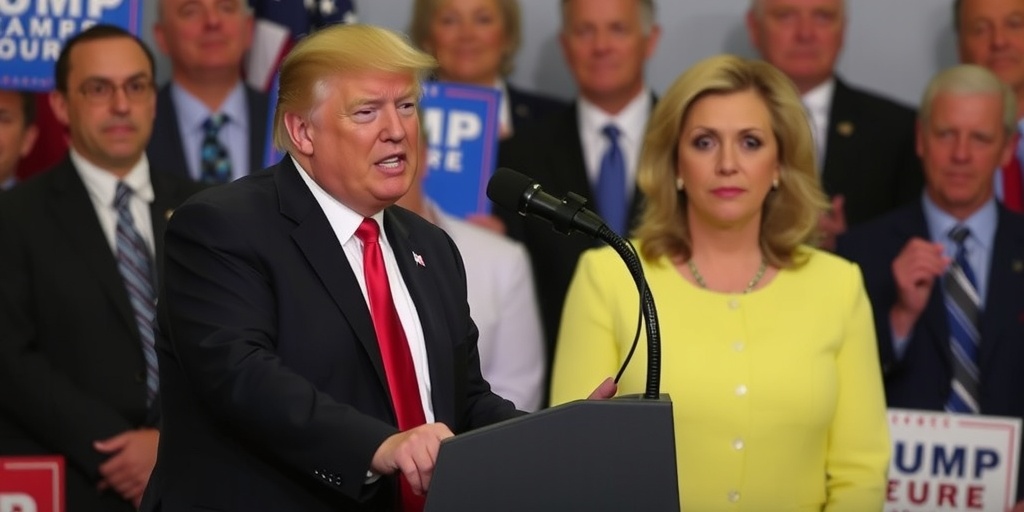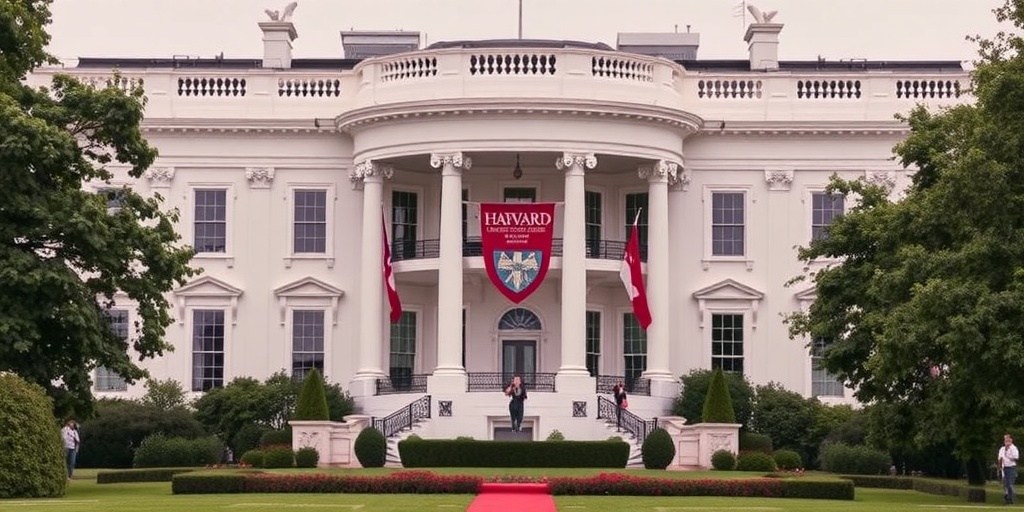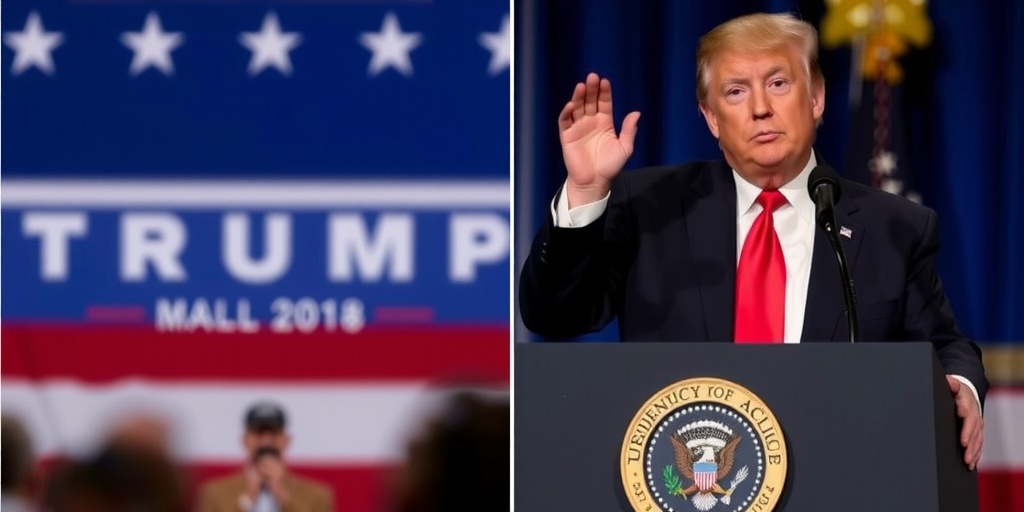Now Reading: Republicans Clash Under Trump’s Big Tent
-
01
Republicans Clash Under Trump’s Big Tent
Republicans Clash Under Trump’s Big Tent

Republicans Embrace a Big-Tent Era Amid Internal Struggles Following Trump’s Victory
Traditionally regarded as the big-tent party, Democrats are known for their rich tapestry of differing perspectives and competing interests, often characterized by headlines depicting them as “in disarray.” However, following Donald J. Trump’s decisive electoral victory, it seems the Republican Party may also be entering a new era of broad inclusion, reflecting a big-tent philosophy of its own.
Despite this apparent expansion of the party’s coalition, challenges have swiftly emerged in the wake of Trump’s triumph. Even before he officially takes office, fissures within the Republican ranks have begun to surface. The situation is reminiscent of the Democrats’ struggles; a larger tent often translates to more pronounced disagreements and conflict among its members.
In the weeks leading up to Trump’s inauguration, tensions among congressional Republicans have become apparent. Some lawmakers have publicly criticized Trump’s bold declarations regarding military action against Greenland, while others from agricultural states are expressing deep concern about his proposed new tariffs on imports. Additionally, the announcement of an abortion rights supporter as part of his cabinet has caused discontent among pro-life factions within the party. Trump’s overtures to tech industry leaders have prompted apprehension among conservatives who are skeptical about the influence of technology firms on political discourse and societal values.
The discord within the party became particularly evident last week when Stephen K. Bannon, a key figure in Trump’s political ascent, launched a vehement critique of Elon Musk, one of Trump’s advisors and the most wealthy individual globally. The dispute revolved around immigration policy, illustrating the wide-ranging and sometimes conflicting viewpoints that exist within the GOP.
Bannon articulated his perspective on the internal turmoil, stating, “The big battles are all on our side of the football — meaningful, tough.” This implies that the Republican Party could be facing significant ideological struggles as it navigates its broadened base.
Historically, the internal conflicts within the party have pitted traditional Republicans against those aligned with Trump’s more populist approach. However, the landscape has shifted dramatically in recent years. As Trump prepares to take office once again, it is evident that nearly all Republicans now identify as part of his movement—though the exact nature of that allegiance varies greatly.
Trump’s upcoming inauguration will showcase the new dynamics present in the party. Interestingly, he will be joined by Vice President JD Vance, a vocal critic of big technology companies, alongside several tech business leaders who have recently aligned themselves with Trump’s vision and contributed financially to his inauguration events.
Throughout his political journey, Trump has remained focused on the demographics that propelled him to victory—primarily white, working-class voters. However, with a larger and more diverse coalition, determining how to satisfy these varied constituents poses a more complex challenge than in the past. His recent win in November was marked by significant gains among demographics that typically lean Democratic, including Black, Latino, female, and younger voters.
While many of these new supporters agree with Trump’s objectives—such as reducing inflation and addressing illegal immigration—it remains uncertain whether they are on board with some of the more hardline conservative policies that his staunchest supporters advocate, such as eliminating birthright citizenship or implementing nationwide abortion bans.
Ralph Reed, a Republican strategist, remarked on the unprecedented diversity within the party’s incoming governing coalition, noting its potential to reshape traditional GOP policies. He emphasized the need for the Republican Party to adapt and rise to the challenges presented by this new demographic landscape.
Two key policy debates may soon test the party’s willingness to adjust to the preferences of its new voter base, according to former House Speaker Newt Gingrich. The first revolves around the status of Dreamers—young immigrants brought to the U.S. as children and whether they should be offered a pathway to citizenship, which could risk alienating moderate voters if Republicans choose a hardline stance. The second is whether the party can promptly pass a tax reform bill aimed at stimulating the economy in order to maintain control over the House in the 2026 midterms.
Despite these larger challenges, Trump retains a strong influence, bolstered during his first term by political threats that largely quelled dissent. However, the dynamics within Congress will demand unity among Republicans, as any ideological divide could hamper legislative progress.
While there is broad consensus on certain issues—such as extending the tax cuts from the previous administration and tackling illegal immigration—the devil lies in the details. For instance, Bannon and Musk have recently clashed over H-1B visas, vital for skilled labor in the tech sector, and Trump’s own mixed signals on immigration policy have revealed deep divides.
As the GOP navigates these complexities, bipartisan disagreements linger around fiscal policies, particularly concerning corporate tax rates and state and local tax deductions. Foreign policy remains another contentious area, especially relating to the U.S. stance on the ongoing conflict in Ukraine and the role of Russia under President Vladimir Putin.
In facing these internal challenges and navigating the complexities of a diverse party base, one thing is clear: the Republican Party is embarking on a delicate balancing act. How effectively they can manage these tensions will shape not only the direction of the party but potentially the future of American politics as well.
Stay Informed With the Latest & Most Important News
Previous Post
Next Post
-
 01New technology breakthrough has everyone talking right now
01New technology breakthrough has everyone talking right now -
 02Unbelievable life hack everyone needs to try today
02Unbelievable life hack everyone needs to try today -
 03Fascinating discovery found buried deep beneath the ocean
03Fascinating discovery found buried deep beneath the ocean -
 04Man invents genius device that solves everyday problems
04Man invents genius device that solves everyday problems -
 05Shocking discovery that changes what we know forever
05Shocking discovery that changes what we know forever -
 06Internet goes wild over celebrity’s unexpected fashion choice
06Internet goes wild over celebrity’s unexpected fashion choice -
 07Rare animal sighting stuns scientists and wildlife lovers
07Rare animal sighting stuns scientists and wildlife lovers





















